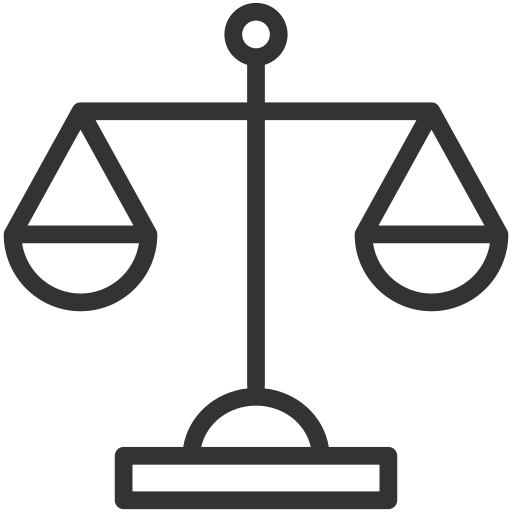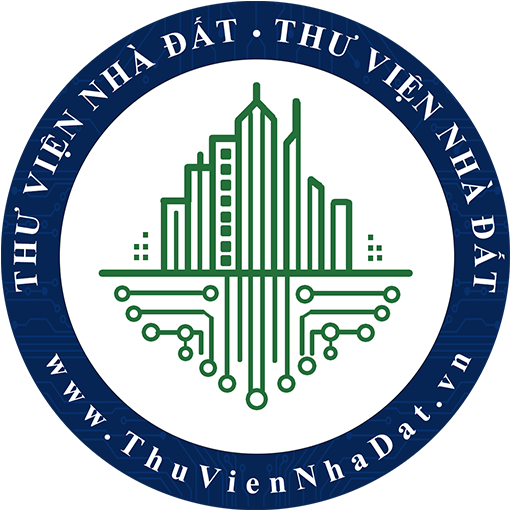|
THE STATE BANK
OF VIETNAM |
SOCIALIST
REPUBLIC OF VIETNAM |
|
No. 9050/NHNN-TD |
Hanoi, November 03, 2017 |
To: Banks and foreign bank branches
In implementing assigned banking tasks under the National Strategy for Green Growth of 2011 - 2020 and vision to 2050 attached to Decision No. 1393/QD-TTg dated September 25, 2012, National Action Plan for Green Growth of 2014 - 2020 attached to Decision No. 403/QD-TTg dated March 20, 2014 and Plan for Implementing the Paris Climate Accords attached under Decision No. 2053/QD-TTg dated October 28, 2016; in order to collect information serving coordination and operation of the State Bank of Vietnam (hereinafter referred to as “SBV”), SBV hereby requests banks and foreign bank branches (hereinafter referred to as “credit institutions”) to:
1. Consolidate reports on credit extension in green sectors using Schedule No. 1 and Guidelines under Appendix; reports on environmental and social risk assessment in credit extension using Schedule No. 2 attached hereto.
- On a Quarterly basis, credit institutions shall submit reports produced using Schedule No. 1 and Schedule No. 2 in writing form to SBV (via Department of Credit for Economic Sectors).
- Starting date of report: reporting period of the 4th Quarter/2017.
2. Produce reports using Schedule No. 1 and Schedule No. 2 attached hereto instead of reports specified under section IV.4 of Directive No. 03/CT-NHNN dated March 24, 2015 of the Governor of State Bank of Vietnam starting from reporting period of the 4th Quarter of 2017.
3. Credit institutions are responsible for strictly and adequately implementing with the aforementioned regulation. Difficulties that arise during the implementation of this Circular should be reported to the SBV (via Department of Credit for Economic Sectors) for consideration.
For your acknowledgement and implementation./.
|
|
ON BEHALF OF
THE GOVERNOR |
Credit Institution: ………
REPORT ON CREDIT EXTENSION IN GREEN SECTORS
(Pursuant to Document No. 9050/NHNN-TD dated November 3, 2017)
…… Quarter of …… (year)
Unit: Billion VND, customers, %/year
|
No. |
Green sector |
Disbursement made during reporting period |
Credit outstanding |
Interest |
Number of customers with outstanding debt by the end of the reporting period |
||||
|
Total |
In which: |
Overdue loan |
|||||||
|
Short term |
Medium and long term |
Short term |
Medium and long term |
||||||
|
(1) |
(2) |
(3) |
(4) |
(5) |
(6) |
(7) |
(8) |
(9) |
(10) |
|
1 |
Green agriculture |
|
|
|
|
|
|
|
|
|
2 |
Sustainable forestry |
|
|
|
|
|
|
|
|
|
3 |
Green industry |
|
|
|
|
|
|
|
|
|
4 |
Renewable energy, clean energy |
|
|
|
|
|
|
|
|
|
5 |
Recycling, reusing natural resources |
|
|
|
|
|
|
|
|
|
6 |
Waste treatment and pollution prevention |
|
|
|
|
|
|
|
|
|
7 |
Natural environment protection, ecological restoration, and natural disaster preparedness and control |
|
|
|
|
|
|
|
|
|
8 |
Sustainable water management in urban areas and rural areas |
|
|
|
|
|
|
|
|
|
9 |
Green construction |
|
|
|
|
|
|
|
|
|
10 |
Sustainable traffic |
|
|
|
|
|
|
|
|
|
11 |
Provision of environmental protection and energy-efficient services |
|
|
|
|
|
|
|
|
|
12 |
Other green sectors |
|
|
|
|
|
|
|
|
(Location and date)
|
REPORTING INDIVIDUAL
|
CONTROL
INDIVIDUAL |
LEGAL
REPRESENTATIVE OF CREDIT INSTITUTION
|
1. Regulated entities: Commercial banks, joint venture banks, foreign invested banks, policy banks, co-operative banks of Vietnam, foreign bank branches (hereinafter referred to as “credit institutions”).
2. Report data requirements: Head office of credit institutions shall consolidate system-wide data and send to SBV.
3. Reporting period: In Quarter (reporting periods end on March 31, June 30, September 30, and December 31).
4. Deadline for report submission: By the end of the 20th of the first month of the next reporting period.
5. Submission method: In writing to the SBV (Department of Credit for Economic Sectors), and soft copy to [email protected].
6. Instructions:
6.1. General instructions:
Regulations on: (1) Applicable exchange rate for the purpose of the report; (2) Rounding; (3) The definition of “dư nợ tín dụng” (credit outstanding) shall conform to applicable guidelines of SBV pertaining to statistical reports applicable to credit institutions and foreign bank branches.
6.2. Specific instructions:
- Report on credit extension performed by credit institutions for investment, manufacturing, and businesses of customers green sectors. The classification of projects and methods of extending credit in green sectors shall be based on the final use of the customers’ credit.
- In regard to transactions made in foreign currency, the amount shall be converted to VND using exchange rate specified under 6.1.
- Column (2): The list of green sectors is specified under Appendix attached hereto.
- Column (3): Specify total amount disbursed from the first working day of the first month of the reporting period to the last working day of the first month of the reporting period. Unit: Billion VND.
- Column (4), column (5), column (5): Specify credit outstanding at the end of the last working day of the reporting period. Unit: Billion VND. Column (4) = Column (5) + Column (6).
- Column (7): Specify overdue credit outstanding at the end of the last working day of the reporting period. The definition of “nợ quá hạn” (outstanding debt) shall conform to applicable regulations of the SBV pertaining to debt classification, setting up and use of risk provisions in banking operation of credit institutions.
- Column (8), Column (9): Specify the lowest and highest load interest in VND for short, medium, and long term (for example: 6-9). Unit: %/year (do not include the “%” next to the specified value).
- Column (10): Specify the number of customers with outstanding debt at the end of the last working day of the reporting period. Unit: customers.
Credit Institution: ………
REPORT ON ENVIRONMENTAL AND SOCIAL RISK ASSESSMENT IN CREDIT EXTENSION
(Pursuant to Document No. 9050/NHNN-TD dated November 3, 2017)
…… Quarter of …… (year)
Unit: billion VND, quantity.
|
No. |
Criteria |
Short term credit extension |
Medium, long term credit extension |
||
|
Quantity |
Value |
Quantity |
Value |
||
|
1 |
Request for credit extension |
|
|
|
|
|
2 |
Request for credit extension rejected after conducting environmental and social risk assessment |
|
|
|
|
|
3 |
Request for credit extension approved after conducting environmental and social risk assessment |
|
|
|
|
|
4 |
Credit extension outstanding for which environmental and social risk assessment has been performed |
|
|
|
|
|
5 |
Credit extension outstanding suspended due to environmental and social risks |
|
|
|
|
|
6 |
Percentage of credit extension for which environmental and social risk assessment has been performed over total credit extension outstanding |
|
|
|
|
(Date)
|
REPORTING
INDIVIDUAL |
CONTROL
INDIVIDUAL |
LEGAL
REPRESENTATIVE OF CREDIT INSTITUTION
|
1. Regulated entities: Commercial banks, joint venture banks, foreign invested banks, policy banks, co-operative banks of Vietnam, foreign bank branches (hereinafter referred to as “credit institutions”).
2. Report data requirements: Head office of credit institutions shall consolidate system-wide data and send to SBV.
3. Reporting period: In Quarter (reporting periods end on March 31, June 30, September 30, and December 31).
4. Deadline for report submission: By the end of the 20th of the first month of the next reporting period.
5. Submission method: In writing to the SBV (Department of Credit for Economic Sectors), and soft copy to [email protected].
LIST OF GREEN SECTORS
(Pursuant to Document No. 9050/NHNN-TD dated November 3, 2017)
According to Decision No. 1393/QD-TTg dated September 25, 2012 of the Prime Minister, the Green Growth Strategy in Vietnam shall be the strategy to promote the restructuring and strengthening of economic institutions in a manner that more effectively utilizes natural resources, improve competitiveness of the economy by increasing investment in technological renovation, natural capital, economic instruments; in order to adapt to climate change, reduce poverty, and ensure sustainable economic development.
According to the United Nations Environment Programme (UNEP), a green economy is an economy that aims to improve human happiness, social justice, and drastically minimize environmental risk and ecological disasters (2011). The OECD defines "green economy” means an economy that creates and distributes environmental friendly products, services, renewable energy, clean traffic and fuel, green infrastructures, reduces energy, material, water consumption via energy and resource efficient strategies and conversion from carbon materials to non-carbon materials.
Based on objectives and solutions of the Plan for implementing the Paris Climate Accords attached to Decision No. 2053/QD-TTg dated October 28, 2016, the National Strategy for Green Growth attached to Decision No. 1393/QD-TTg dated September 25, 2012, the National Action Plan for Green Growth for 2014 - 2020 attached to Decision No. 403/QD-TTg dated March 20, 2014; on the basis of feedback of relevant ministries and central departments; the SBV hereby guides the listing of green projects and solutions, environmental protection projects and solutions, climate change mitigation and adaptation projects and solutions under the following sectors (hereinafter referred to as “green sectors”):
1. Green agriculture: (1) projects and solutions for modern and integrated agriculture production such as developing the capacity for commercial plant breeding, developing the capacity to supply cultivars for production (network of propagating, distributing, transporting, preparing soil, procuring mechanized equipment, synchronously developing cultivar drying, selecting, processing, preparing, storage stages); (2) projects and solutions for agriculture production that adopts high technology, green agriculture, organic agriculture and (3) projects and solutions for agriculture production that reduces greenhouse gas emission (low carbon agriculture), adapts to climate change by applying technology, procedures for efficiently using cultivars, feeds, materials, resources (soil, water, etc.) in agricultural production.
2. Sustainable forestry: refers to projects of afforestation, reforestation, production forest, forest conservation that primarily involve the investment and development of agricultural cultivars, planting and conserving of the forest, and projects for development of planting and husbandry in the forest utilizing forest resources and forest ecosystem; this sector also includes projects and solutions for sustainable and highly efficient development of ecotourism in forests.
3. Green industry: refers to projects and solutions that save resources (energy, water, etc.), reduce emission, utilize gas and heat produced in industrial manufacturing; general solutions and structures for improving the environment (working environment, premise environment, surrounding environment) in industrial production.
4. Renewable energy, clean energy: (1) refer to projects and solutions for investing in construction and operation of manufacturing facilities/equipment or manufacturing of equipment, parts serving manufacturing/consumption of renewable energy such as solar power, wind power, biomass power, small-scale hydroelectricity, other forms of new energy, clean energy; (2) this sector also includes smart electricity projects and solutions, electricity projects that focus on new energy, new materials, new equipment, and advanced information technology, energy control and reservation engineering in order to perform digitalization management, smart decision-making, and flexible transaction in electricity generation, electricity transmission, cooperation, use, and reservation of electricity; optimize resource distribution, satisfy electricity demands of households, ensure safety, reliability, and efficiency in electricity supply, satisfy environmental protection requirements, and conform to electricity market development demands.
5. Recycling and reuse of resources: refer to projects and solutions for recycling and reuse of natural resources, minerals; recycling and reuse of regular solid waste; recycling and reuse of construction and roadwork wastes; recycling and reuse of garbage-based resources; recycling and reuse of dismantled and manufacturing materials; recycling and reuse of agriculture and forestry by-products and refuse; recycling of renewable resources.
6. Waste treatment and pollution prevention: refer to projects and solutions for treating waste and preventing pollution such as treating wastewater, refuse, sludge, hazardous waste, air pollution, water pollution, etc.
7. Environmental protection, ecological restoration, and natural disaster preparedness: refer to projects and solutions for developing natural reserves (forest, marine, wild fauna and flora, fresh water, desert, grassland), ecological restoration (marine, mangrove forests, etc.), natural disaster preparedness and response structures (such as protecting and restoring groundwater sources, water ecological system for preventing and responding to drought, natural disasters, storm preparedness and response structures, embankments, general structures preventing soil erosion, etc.
8. Sustainable water management in urban and rural areas: (1) indicate projects and solutions for saving water in the city such as improving city domestic water supply system in order to reduce water loss, consolidating water sources, sustainably using recycled water or rainwater and other water efficiency projects in city; (2) construction projects and solutions to solve domestic water source safety in rural areas; (3) projects and solutions for building irrigation infrastructures in agricultural production (such as detention basins, irrigation pump station, irrigation channels, water pipe infrastructures, etc.).
9. Green construction: refers to projects and solutions for (1) building and renovating civil constructions in a manner that save and efficiently uses energy, water, and other natural resources; (2) manufacturing environmentally friendly construction materials; improving technology and procedures for manufacturing construction materials in order to save energy and water.
10. Sustainable traffic: (1) indicates projects and solutions for investing in development of sustainable traffic such as investing, upgrading traffic systems and networks (water traffic, highway, railway traffic) in a manner that saves energy and resists climate change; developing smart and high connectivity traffic system (such as developing and installing, improving smart traffic lights in urban areas; developing bus and electric transit vehicle connectivity between ports, stations, terminals; developing and operating traffic structures that are highly interregional and transboundary in nature); (2) projects and solutions for investing in low-emission and fuel-efficient means of transport; applying new technology, new energy forms, clean energy/fuel in transport.
11. Provision of environmental protection and natural resource efficient services: (1) indicate projects and solutions for investing in counseling services pertaining to testing and duplicating application energy efficient technology; energy efficient architectural design and technology; provision of counseling services pertaining to energy efficiency evaluation, etc.; (2) services for investigating and assessing environmental risks in polluted areas; operating and maintaining environmental security counseling and assessment facilities, equipment; training environment investigating personnel; assessing ecology effectiveness; forecasting and assessing pollution treatment; etc.
12. Other green sectors: indicate other green sectors according to assessment of credit institutions and are not listed among 11 green sectors above. In this case, credit institutions shall specify each green sector (or purpose of loan) and add a note section in the report under Appendix 1 attached hereto.
Example listing of green sectors:
|
Green sector |
Specific entry |
Examples |
Reference |
|
Modern and integrated agricultural production |
Project for experimenting cultivars and researching good cultivars. Commercial plant breeding propagation facility. Project for developing cultivar retail supermarkets or retailers in rural areas. Project for developing cultivar sale network. Project for improving cereal quality. Project for breeding high productivity livestock, poultry breeds |
- Decision No. 124/QD-TTg dated February 2, 2012 of the Prime Minister. - Decision No. 899/QD-TTg dated June 10, 2013 of the Prime Minister. - Decision No. 01/2012/QD-TTg dated January 9, 2012 of the Prime Minister. - Decision No. 738/QD-BNN-KHCN dated March 14, 2017 of the Minister of Agriculture and Rural Development. - Decision No. 379/QD-BNN-KHCN dated January 28, 2008 of the Ministry of Agriculture and Rural Development. - Decision No. 3824/QD-BNN-TCTS dated September 6, 2014 of the Ministry of Agriculture and Rural Development. - Decision No. 4653/QD-BNN-CN dated November 10, 20165 of the Ministry of Agriculture and Rural Development. National Standard TCVN11041:2015 on Guidelines for the production, processing, labeling and marketing of organically produced foods. - Vietnam PGS (Participatory Guarantee System) Standards. - Circular No. 48/2013/TT-BNNPTNT dated November 12, 2013 of the Ministry of Agriculture and Rural Development. - Circular No. 45/2014/TT-BNNPTNT dated December 3, 2014 of the Ministry of Agriculture and Rural Development. - Circular No. 50/2011/TT-BNNPTNT dated July 15, 2011 of the Ministry of Agriculture and Rural Development. - Circular No. 48/2012/TT-BNNPTNT dated September 26, 2012 of the Ministry of Agriculture and Rural Development. - Law No. 50/2010/QH12 dated June 17, 2010 on Efficient and Effective Use of Energy. - Decree No. 54/2015/ND-CP dated June 8, 2015. - Circular No. 19/2013/TT-BNNPTNT dated March 15, 2013. - Decision No. 819/QD-BNN-KHCN dated March 14, 2016 of the Ministry of Agriculture and Rural Development. - Decision No. 3119/QD-BNN-KHCN dated December 16, 2011 of the Ministry of Agriculture and Rural Development. |
|
|
High-tech agriculture |
Investment projects implemented in High-tech agricultural zones established under decision of competent authority. Projects in High-tech agricultural zones recognized by People’s Committees of provinces and central-affiliated cities. Projects of high-tech agriculture enterprises certified by Ministry of Agriculture and Rural Development in writing. Other high-tech agriculture projects: Projects that involve biotechnology application in agriculture such as: - Technology of breeding cultivars, animal breeds, aquatic breeds that utilize molecular biology to create new and superior cultivars and breeds (higher productivity, higher quality, disease resistant, and adaptability to climate change); - Biotechnology in manufacturing biological preparations for agricultural and environmental use: organic fertilizers, microbial fertilizers, plant protection chemicals, plant-growth regulators, environmental remediation preparations; - Biotechnology in evaluating, diagnosing plant, animal diseases; technology in manufacturing and applying rapid test kits for plant and animal diseases; reagents, test strips, primers, antibody; - Breeding technology using cell culture and radiation mutation; - Animal cell technology in freezing sperm cells, embryos, differentiating sexes, in vitro fertilization for breed production; - Microorganism, enzyme, and protein technologies in industrial-scale production of biological preparations in nutrition, plant and animal protection; - Biotechnology and remote sensing technology in management and prevention of pests and diseases of agriculture and forestry plants; - Production technology for animal vaccines; - Molecular biology, immunology technology, and microbiology technologies in preventing, treating dangerous diseases of aquatic species. Projects utilizing tillage, culture, preservation techniques such as: - Soilless culture techniques: water culture, fog culture, planting media, nutrient films; - Mist and drip irrigation technologies with automatic and semi-automatic control scheme; - Greenhouse, net house, nylon mesh with automatic and semi-automatic control scheme; - Irradiation, vapor heat treatment technology, water heat treatment technology, freeze drying technology, quick drying technology in preservation of agricultural products; - New technologies in preserving and processing agricultural products: controlled atmosphere packaging technology; cell alive system in combination with ethylene absorber in preserving fresh vegetables and fruits; packaging film in preserving vegetables, fruits, meat, eggs; fermentation technology, deep processing technology, biological and microbial technology for processing biological preparations and natural colorings, additives in preservation and processing of agricultural products; - Intensive farming and integrated crop management (ICM) technology; technologies for producing safe plants, animals, aquatic species satisfactory to VietGAP; - Intensive fish farming and super-intensive fish farming technologies; - Environmental remediation technology in aquaculture. Projects that utilize automation technologies in agriculture such as: - Synchronized mechanization technology in production, harvesting, processing, and post-harvest preservation of agricultural products; - Automation technology in irrigation and nutrition in commodity-scale cultivation; - Automatic and semi-automatic technologies in industry-scale husbandry, intensive fish farming and cultivation; - Automatic and semi-automatic technologies in fishing. Projects that apply agriculture material manufacturing technologies such as: - Nano technology in manufacturing nano preparations such as fertilizers, plant protection chemicals, nutrition preparations for plants and animals; - Technologies for manufacturing planting media, agricultural instruments, additives, fruit packaging films, agriculture films, auxiliary materials for nylon mesh house system, greenhouse system, irrigation system; - Wood modification technology, eco-drying technology, impregnation and coating technology for wood preservation, biotechnology in preservation preparations, next-gen preparations for preventing termites in wood; manufacturing technology of environmentally friendly cover films for wood products; - Information technology, automation technology to save energy, time, and improve wood efficiency; - Technologies for forecasting, saving, and extracting water resource; water harvesting and storage technology for stable and effective water supply for multiple purposes; - Irrigation infrastructure construction technology; freshwater filtering and supply technology for areas suffering from salt-water intrusion, coastal areas, and islands; - Technologies involving new materials, new structural solutions, new equipment serving construction of irrigation structures; - Wastewater treatment and rural environment remediation technologies; - Remote sensing technology and geographic information system serving management and operation of irrigation structures, fish farming, season observation and assessment. |
||
|
Clean agriculture |
Projects executed at manufacturing and business facilities issued with Certificate of food safety in accordance with Circular No. 48/2013/TT-BNNPTNT dated November 12, 2013 of the Minister of Agriculture and Rural Development. Projects executed in manufacturing and business facilities issued with certificate of agro-fishery-forestry facilities eligible for food safety in accordance with Circular No. 45/2014/TT-BNNPTNT dated December 3, 2014 of the Minister of Agriculture and Rural Development. Projects of enterprises issued with certificate of high-tech agriculture in accordance with Circular No. 50/2011/TT-BNNPTNT dated July 15, 2011. Projects for producing agricultural products issued with VietGAP certification in accordance with Circular No. 48/2012/TT-BNNPTNT dated September 26, 2012 of the Minister of Agriculture and Rural Development. New investment projects in clean agriculture production which apply national-level or equivalent international-level good agriculture production practice (VietGAP, GlobalGAP, ASC, IMC,etc.). |
||
|
Organic agriculture |
Organic cultivation projects following national standard regarding guidelines on production, processing, labeling, and marketing of food produced using organic methods(TCVN 11041:2015) or other organic standards recognized by the Ministry of Agriculture and Rural Development (Vietnam PGS, etc.). Organic cultivation projects following national standard regarding guidelines on production, processing, labeling, and marketing of food produced using organic methods(TCVN 11041:2015) or other organic standards recognized by the Ministry of Agriculture and Rural Development (Vietnam PGS, etc.). Organic agricultural product processing projects. |
||
|
Agriculture that involves greenhouse gas reduction (low-carbon agriculture), smart adaptation to climate change |
Technology and procedures for efficiently using breeds, food, materials, resources (soil, water, etc.) in agricultural production. Propagate treatment and recycling technologies for by-products and waste in agricultural production to create husbandry feeds, fungiculture, use as industrial materials, biogas, organic fertilizer, etc. |
||
|
Investment and development of forestry cultivars |
Project for selling of cultivars, propagating and nursing high-quality forestry cultivars. Project for centralized propagating and nursing of forestry cultivars. Project for construction of forestry cultivar nurseries. Project for development of nurseries, breeding facilities, and suppliers of high economic forestry cultivars suitable for local forests. Project for development of nurseries, breeding facilities, and suppliers of industrial crops with large biomass and high economic value and appropriate to local forestry soil. Project for development of model of nursing, breeding, and supplying mangroves appropriate to local forest types. |
- Law No. 29/2004/QH11 dated December 3, 2004 on Forest Protection and Development. - Decree No. 117/2010/ND-CP dated December 24, 2010. - Decision No. 08/2007/QD-TTg dated February 5, 2007 of the Prime Minister. - Decision No. 1565/QD-BNN-TCLN dated July 8, 2013 of the Ministry of Agriculture and Rural Development. - Decision No. 124/QD-TTg dated February 2, 2012 of the Prime Minister. - Decision No. 899/QD-TTg dated June 10, 2013 of the Prime Minister. - Decision No. 57/QD-TTg dated January 9, 2012 of the Prime Minister. - Law No. 50/2010/QH12 dated June 17, 2010 on Efficient and Effective Use of Energy. - Decree No. 54/2015/ND-CP dated June 8, 2015. - Circular No. 19/2013/TT-BNNPTNT dated March 15, 2013. - Decision No. 104/2007/QD-BNN dated December 27, 2007. |
|
|
Forestry economy and forest service development |
Project for construction and operation of extraction and processing facilities for wood products of cultivated forests certified for sustainable forest management instead of natural forests. Project for construction and operation of extraction and processing facilities for non-timber forest products (Vietnamese ginseng, Lanxangia tsaoko, Macadamia, etc.) with high economic value. Project for development of enterprises renovating and innovating technologies for manufacturing wooden household items using woodchips instead of wooden boards. Project for development of carbon footprint labeling for wooden products with defined origin. Project for developing production and combining cultivation and husbandry in forest ecosystem. |
||
|
Economic development of forest ecotourism |
Project for development of highly effective ecoforestry Project for development of ecotourism forms appropriate to local forest types. Project for construction of eco forest perimeter. |
||
|
Forest preservation and development |
Project for afforestation Project for forest soil improvement Project for improving forest soil from low efficiency to high efficiency Project for preserving and managing mangrove forests in a mutual benefit fashion. Project for management, protection and development of coastal forest to adapt to climate change and prepare for natural disasters. |
||
|
Energy efficiency in industrial production |
Project for renovating technologies of production lines to save energy. Project for renovating technologies to reduce energy consumption. Project for general renovation to increase effectiveness, save energy, and reduce emission. Project for renovating, upgrading, and using furnaces with high efficiency instead of furnaces with low efficiency. |
- Decision No. 879/QD-TTg dated June 9, 2014 of the Prime Minister. - Decision No. 1419/QD-TTg dated September 7, 2009 of the Prime Minister. - Law No. 50/2010/QH12 dated June 17, 2010 on Efficient and Effective Use of Energy. - Decree No. 54/2015/ND-CP dated June 8, 2015. - Circular No. 02/2014/TT-BCT dated January 16, 2014 of the Ministry of Industry and Trade. - Decision No. 13443/QD-BCT dated December 8, 2015. - Circular No. 35/2015/TT-BTNMT dated June 30, 2015 of the Ministry of Environment and Natural Resources. |
|
|
Waste reduction in industrial production |
Project for renovation of sulfur separation in thermal power plants, steel factories, cement factories. Project for separation of sulfur from emission of boilers. Project for renovation of dust filtration in power plants, steel factories, cement factories. Project for renovation of dust filtration technology in factories. |
||
|
Utilization of residual heat and pressure |
Project for utilizing residual heat of power generation. Project for providing heat from industrial residual heat. Project for generating power from residual heat of furnaces, boilers. Project for generating power from residual heat of cement production. Project for generating power from steelwork. |
||
|
General solutions for improving environment in industrial production |
Project for synchronously renovating environmental protection system and equipment. Project for renovating and constructing work areas, factories satisfactory to occupational safety and hygiene. Project for renovating, constructing grounds of green and clean factories, industrial parks, export-processing zones, etc. and improving surrounding environment. Project for overall renovating industrial environment. |
||
|
Wind power |
Project for wind farms/wind power plants Project for manufacturing equipment and parts for manufacturing/using wind power. |
- Decision No. 1208/QD-TTg dated July 21, 2011 of the Prime Minister. - Decision No. 428/QD-TTg dated March 18, 2016 of the Prime Minister. - Decision No. 2068/QD-TTg dated November 25, 2015 of the Prime Minister. - Decision No. 37/2011/QD-TTg dated June 29, 2011 of the Prime Minister. - Decision No. 24/2014/QD-TTg dated March 24, 2014 of the Prime Minister. - Decision No. 31/2014/QD-TTg dated May 5, 2014 of the Prime Minister. - Decision No. 11/2017/QD-TTg dated April 11, 2017 of the Prime Minister. - Circular No. 43/2012/TT-BCT dated December 27, 2012. |
|
|
Solar power |
Project for solar farms/solar power plants Project for manufacturing equipment and parts for manufacturing/using solar power. Project for investing, building solar power structures for household use. Project for manufacturing devices that use solar power with scale and technology appropriate to Vietnam. |
||
|
Biomass power |
Project for building and operating biomass power plant. Project for constructing and operating factories manufacturing equipment of biomass power plant. Project for combining factories manufacturing agro-forestry products and recycling by-products to create biomass power. Project for combining sugar cane factories and recycling bagasse to create biomass power. Project for investing in ingredient zones to provide wastes, by-products in agricultural production and other plants that can serve as fuel for biomass power such as wood, bagasse, husk, hay, etc. |
||
|
Small-scale hydroelectricity |
Project for planning management and investment assistance in construction of small-scale hydroelectricity project Project for operation and utilization of small-scale hydroelectricity projects. |
||
|
Other new energy, clean energy |
Construction and operation of geothermal power plants, geothermal pumps, electricity generation directly from water (water splitting, current). Construction and operation of factories manufacturing equipment serving power plants that use other forms of renewable energy. Construction and operation of power plants that use waste as generation sources; construction and operation of factories manufacturing generators that use waste as generation sources, equipment for waste-to-energy plants. Project for electricity generation from natural gas. |
||
|
Smart grid |
Project for construction and operation of smart grid system. |
||
|
Reusing natural resources |
Project for utilizing residual oil sources. Project for utilizing magnesium and sodium sources. Project for utilizing excess, residual ores. Project for utilizing copper. Project for utilizing peat. |
- The Law No. 55/2014/QH13 dated June 23, 2014 on environmental protection. - Decree No. 19/2015/ND-CP dated February 14, 2015. - Decree No. 38/2015/ND-CP dated April 24, 2015. - Decision No. 2149/QD-TTg dated December 16, 2009 of the Prime Minister. - Decision No. 1696/QD-TTg dated September 23, 2014 of the Prime Minister. - Decision No. 76/QD-CP dated January 11, 2016 of the Prime Minister. - Decision No. 452/QD-TTg dated April 12, 2017 of the Prime Minister. |
|
|
Recycling and reusing regular solid wastes |
Project for manufacturing calcite from dry residue of water. Project for recovering and utilizing wastes of phosphorus minerals. Project for manufacturing pressed bricks from coal slag. Project for structures utilizing phosphorus and plaster wastes. |
||
|
Recycling and reusing wastes in construction and roadwork |
Project for producing compounds from recycled asphalt. Project for utilizing construction wastes. |
||
|
Recycling and reusing wastes |
Project for retrieving and utilizing wastes; recycling and reusing wastes, etc. |
||
|
Recycling and reusing of replaceable and components |
Project for concentrating metal produced by dismantlement of electric appliances. Project for utilizing scraps electric wires and cables. Project for utilizing scrap electrical engineering items. Project for recycling automobile parts. Project for recycling construction machinery. Project for recycling of electric motors and parts. Project for recycling office machinery and equipment. Project for recycling metallurgy parts and machinery. |
||
|
Recycling and reusing agro-forestry by-products and wastes |
Project for recycling straws and woodchips for domestic items. Project for processing and utilizing loose branches in forestry. Project for manufacturing activated carbon from scrap branches. Project for utilizing faeces in husbandry and production of fertilizers and methane gas. |
||
|
Reusing recycled resources |
project for manufacturing nylon fiber from polyesters bottles. Project for utilizing scrap paper. Project for manufacturing recycled rubber. Project for recycling plastic and nylon bags. Project for retrieving and utilizing glass bottles and shards. |
||
|
Others |
Project for utilizing wastes in industrial sectors. Project for utilizing heavy, sour oil. Project for utilizing industrial wastes. Project for utilizing methane gas produced by waste burial. |
||
|
Wastewater treatment |
Project for construction and operation of wastewater collection and treatment facilities. Project for wastewater treatment using biotechnology; mechanical technology; chemical technology. Project for construction, renovation, expansion and treatment and pipeline system in wastewater treatment. Project for domestic wastewater treatment. Project for industrial wastewater treatment. Project for general wastewater treatment facilities. Project for wastewater treatment station upgrade. Project for wastewater containment trenches. |
- The Law No. 55/2014/QH13 dated June 23, 2014 on environmental protection. - Decree No. 19/2015/ND-CP dated February 14, 2015. - Decree No. 80/2014/ND-CP dated August 6, 2014. - Decision No. 2149/QD-TTg dated December 16, 2009 of the Prime Minister. - Decision No. 1292/QD-TTg dated August 1, 2014 of the Prime Minister. - Circular No. 36/2015/TT-BTNMT dated June 30, 2015 of the Ministry of Environment and Natural Resources. - Circular No. 35/2015/TT-BTNMT dated June 30, 2015 of the Ministry of Environment and Natural Resources. - Circular No. 31/2016/TT-BTNMT dated October 14, 2016 of the Ministry of Environment and Natural Resources. |
|
|
Waste treatment |
Project for construction and operation of domestic waste collection, treatment facilities. Project for industrial solid waste treatment. Project for hazardous solid waste treatment. Project for construction of solid waste treatment yard. Project for investment in municipal solid waste treatment technologies (organic stool processing, hygienic incineration, burial, etc.) conforming to national technical regulations. Project for renovation and expansion of waste treatment facilities. Project for medical scrap and waste treatment. Project for waste sludge treatment facilities. Project for construction of concentrated waste treatment facilities in industry sectors. |
||
|
Pollution prevention |
Project for construction of structures for treating and preventing pollution in runoff. Project for investment in technology for improving water environment quality. Project for construction of dredging and pollution prevention facilities. Project for dealing with propagating pollution sources in rural areas. Project for minimizing and preventing air pollution (dust, air). Project for treatment of industrial exhaust. Project for general pollution treatment in enterprises. |
||
|
Natural environment protection |
Project for construction of concentrated wild animal rescue and shelter centers. Project for construction of wetland protection facilities; development of community-based economy to protect wetlands; sustainable extraction and use of peat in peatlands; management and prevention of activities that can cause fire in peatlands. Project for ecological structures in wetlands. Project for ecological structures in saline biomes. Project for general protection of Ramsar sites. |
- Law No. 20/2008/QH12 dated November 13, 2008 on Biodiversity. - Law No. 29/2004/QH11 dated December 3, 2004 on Forest Protection and Development. - Law No. 17/2012/QH13 dated June 21, 2012 on Water Resource. - Decree No. 117/2010/ND-CP dated December 24, 2010. - Decree No. 65/2010/ND-CP dated June 11, 2010 of the Government. - Decree No. 109/2003/ND-CP dated September 23, 2009 of the Government. - Decision No. 218/QD-TTg dated February 7, 2014 of the Prime Minister. - Decision No. 1570/QD-TTg dated September 6, 2013of the Prime Minister. - Decision No. 104/2007/QD-BNN dated December 27, 2007. |
|
|
Ecological restoration |
Project for ecological restoration of wetlands. Project for ecological restoration and protection. Project for genera environmental restoration of wetlands. Project for desert restoration structures. Project for ecological restoration of saline biome. Project for construction of ecological environment to convert farmland into forest land. |
||
|
Natural disaster preparedness |
Flood and inundation prevention structures. Ecological and irrigation structures for preventing flood. Project for drought prevention and water resource protection. Project for embankment fortification. Project for general structures for preventing soil erosion. |
||
|
8. Sustainable water management in urban areas and rural areas |
Sustainable water management in the city |
Project for renovation of domestic water supply system in the city to reduce water loss and leak. Project for construction and renovation of domestic water supply system in the city to ensure hygiene and effective water supply for households. Project for investment in rainwater collection, treatment, and reuse in urban areas. Structures for reusing treated domestic wastewater. Other projects for saving water. |
- Law No. 17/2012/QH13 dated June 21, 2012 on Water Resource. - Decree No. 54/2015/ND-CP dated June 8, 2015. - Decision No. 1590/QD-TTg dated October 9, 2009 of the Prime Minister. - Decision No. 2147/QD-TTg dated November 24, 2010 of the Prime Minister. - Decision No. 2502/QD-TTg dated December 22, 2016 of the Prime Minister. |
|
Sustainable water management in rural areas |
Clean water programs and projects in rural areas. Construction of domestic water supply system in rural areas. |
||
|
Construction of irrigation infrastructures for agricultural production |
Water source infrastructures for agricultural production. Irrigation system infrastructures. Treating, dreading rural water bodies to supply water for cultivation. Project for irrigation water treatment infrastructures. Constructions for irrigation water supply and transport. |
||
|
Construction and renovation of civil constructions that save and effectively use energy, water, resources |
Project for construction of energy efficient buildings. Designing of smart buildings, utilizing natural light and air, reducing energy, water, and other resource consumption. Construction and management of green structures in the city (parks, flower gardens, squares, etc.). Project for investment and development of tree for urban climate regulation (study, propagation, and provision of urban trees appropriate to Vietnam’s weather conditions; provision of machinery and services for maintaining and preserving urban trees). |
- Decision No. 134/QD-TTg dated January 26, 2015 of the Prime Minister. - Decision No. 1469/QD-TTg dated August 22, 2014 of the Prime Minister. - Decision No. 1696/QD-TTg dated September 23, 2014 of the Prime Minister. - Decision No. 452/QD-TTg dated April 12, 2017 of the Prime Minister. - Circular No. 15/2013/TT-BXD dated September 26, 2013 of the Ministry of Construction. - Certificates and certification of green, energy efficient structures such as: Excellence in Design for Greater Efficiencies (EDGE) of the International Finance Corporation (IFC); Green building certification system of LOTUS of the Vietnam Green Building Council; LEED certification of the U.S. Green Building Council; Green Mark system of Singapore, and other international certificates used in assessment and certification of buildings in Vietnam. |
|
|
Production and management of sustainable, environmentally friendly construction materials |
Production of energy efficient construction materials such as solar panels and solar leaves, ecological insulation materials such as concrete blocks, polyurethane foam, energy efficient lights, eco-friendly paint with low VOC content, clay tiles. Renovation and modernization of construction material processing and production facilities to save energy, reduce emission. Elimination of open lime kilns. Use of slags from coal-fired thermal power plants in production of construction materials to reduce waste dump of thermal power plant projects. In cement production: projects of investment in waste heat recovery technology, renovation and improvement of exhaust fans, renovation of dust separation equipment, adjustment of air intake, installation of supply air grills, construction of roofed storage for ingredient containment, utilization of furnace heat and smoke in initial drying of ingredients, use of scraps of less toxic metallurgy, etc. In regard to baked brick production: projects for investment, renovation, and installation of dust exhaust, treatment system in drying area, renovation of pipelines for recovering heat from furnace for use in grates, installation of dust removal system, installation of fans in outlet to recover heat, reduce temperature and dust exiting the facilities, etc. |
||
|
Development of sustainable traffic infrastructures |
Investment and upgrade of energy efficient traffic system, traffic network (waterway, highway, railway). Project for construction and renovation of traffic infrastructures resistant to climate change. Construction, installation, and renovation of smart control scheme of traffic lights in urban areas. Construction and installation of smart street lights using solar panels. Development of connectivity system via bus and electric vehicles, transit between ports and stations via smart public transport. Development and operation of traffic system with high connectivity (interregional connection, transboundary connection). Project for installation of LED street lights. Project for saving water and energy in service areas, stations |
- Decision No. 355/QD-TTg dated February 25, 2013 of the Prime Minister. - Decision No.214/QD-TTg dated February 10, 2015 of the Prime Minister. - Decision No. 356/QD-TTg dated February 25, 2013 of the Prime Minister. - Decision No. 21/QD-TTg dated January 8, 2009 of the Prime Minister. - Decision No. 2190/QD-TTg dated December 24, 2009 of the Prime Minister. - Circular No. 64/2011/TT-BGTVT dated December 26, 2011 of the Ministry of Transport. - Decision No. 1071/QD-BGTVT dated April 24, 2013 of the Ministry of Transport. |
|
|
Reduction of emission of transport |
Investment, production, and use of public transport; transport using low-emission fuel (aviation, electric train, etc.) Use of clean energy (liquefied petroleum, compressed natural gas, etc.) in operation of transport. Investment in application of new energy for road transport: vehicles using electricity, hydrogen, biofuel (E5, E10), biodiesel (B5), etc. Investment in new, modern technologies to reduce emission, filter emission, etc. of transport. Renovation and replacement with buses using liquefied natural gas (LNG) and compressed natural gas (CNG). Project for procurement and replacement of buses using new energy forms. |
||
|
11. Provision of environmental protection, resource efficient services |
Provision of energy efficient services |
Projects of Esco enterprises. Counseling services pertaining to testing and duplication of application of energy efficient technology. Design of energy efficient architectures and technology. Energy efficiency evaluation service. |
- Law No. 55/2014/QH13 dated June 23, 2014 on environmental protection. - Law No. 50/2010/QH12 dated June 17, 2010 on Efficient and Effective Use of Energy. - Decree No. 19/2015/ND-CP dated February 14, 2015. - Decision No. 192/QD-TTg dated February 13, 2017 of the Prime Minister. - Decision No. 1292/QD-TTg dated August 1, 2014 of the Prime Minister. |
|
Provision of environmental protection services |
Environmental risk investigation and assessment service in polluted areas. Operation and maintenance of environment safety assessment, counseling facilities and equipment. Pollution remediation effectiveness forecast and evaluation service. Training for environmental investigator. |
||
|
|
Other green sectors deemed by credit institutions to be outside of 11 sectors above. |
|
------------------------------------------------------------------------------------------------------
This translation is made by THƯ VIỆN PHÁP LUẬT, Ho Chi Minh City, Vietnam and
for reference purposes only. Its copyright is owned by THƯ VIỆN PHÁP LUẬT
and protected under Clause 2, Article 14 of the Law on Intellectual Property.Your comments are always welcomed



















